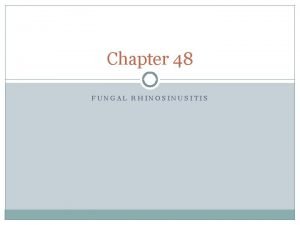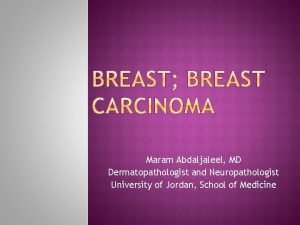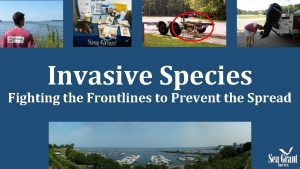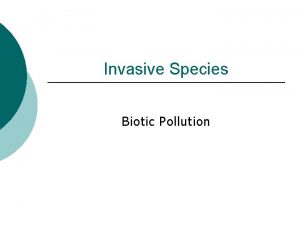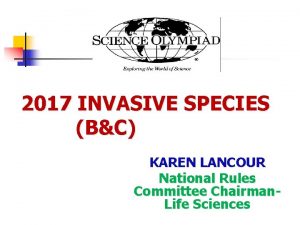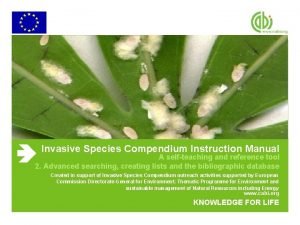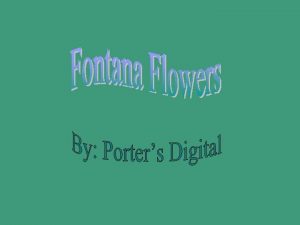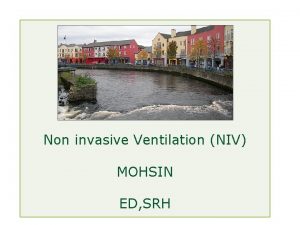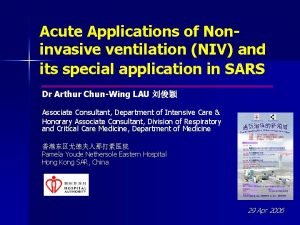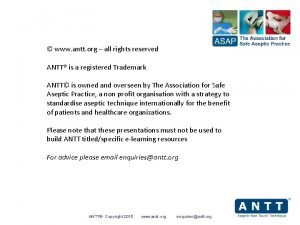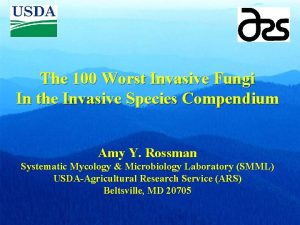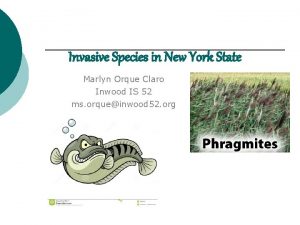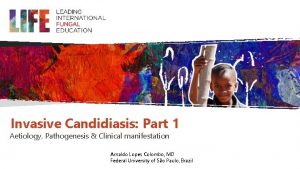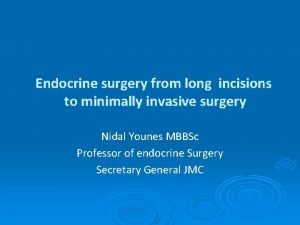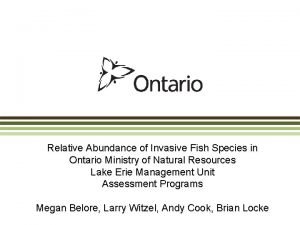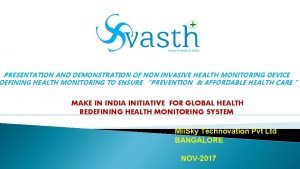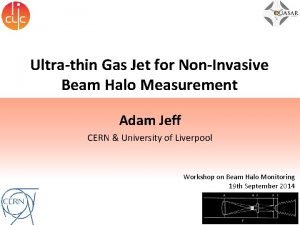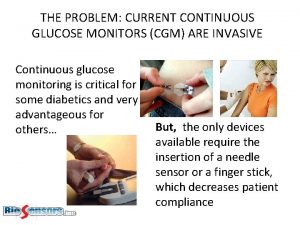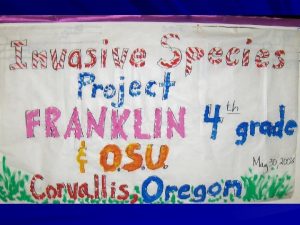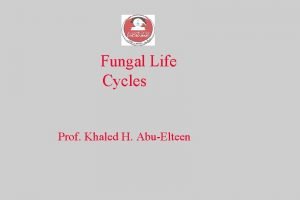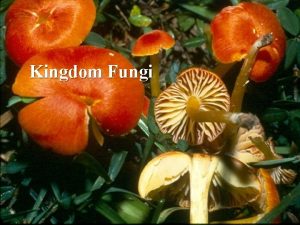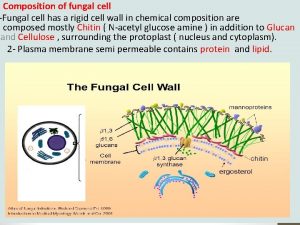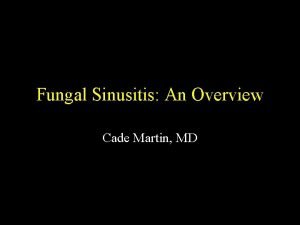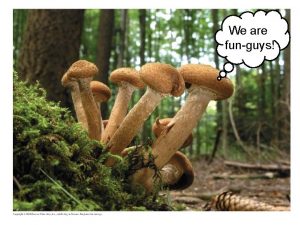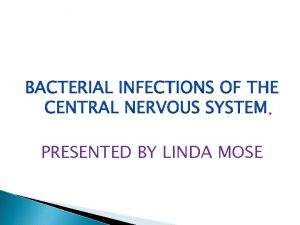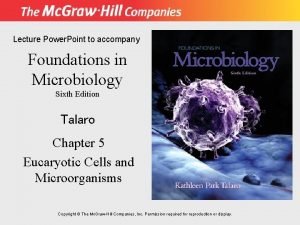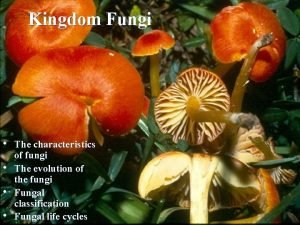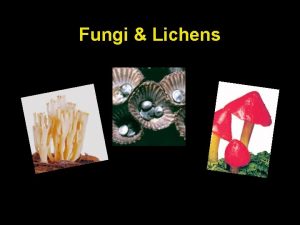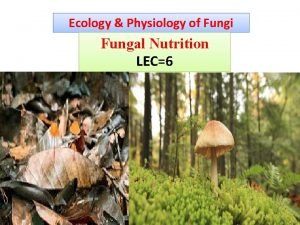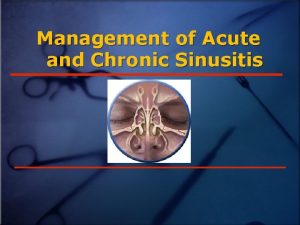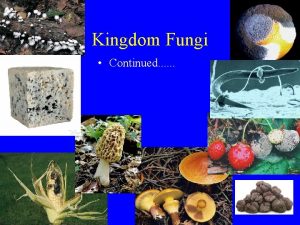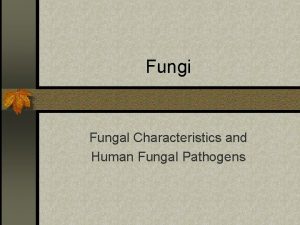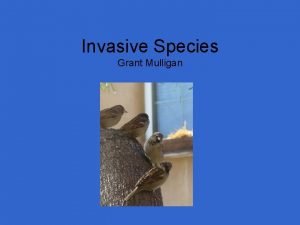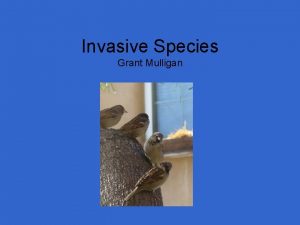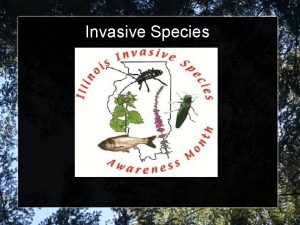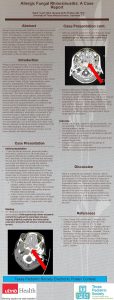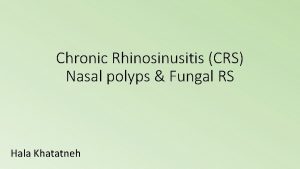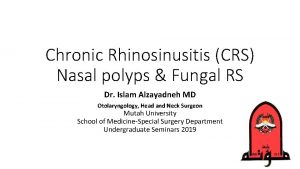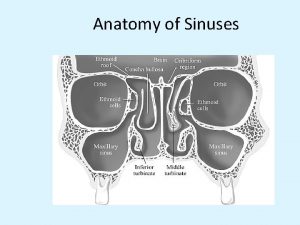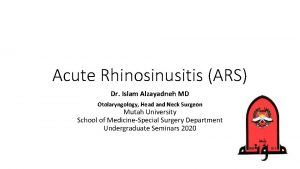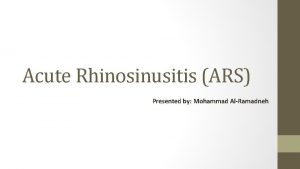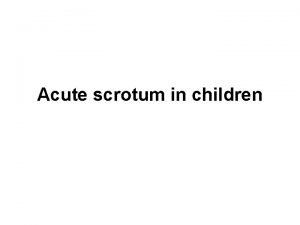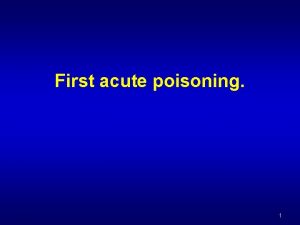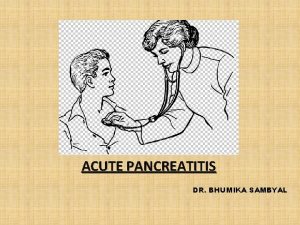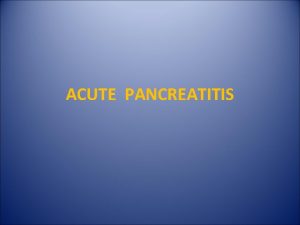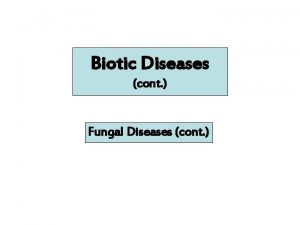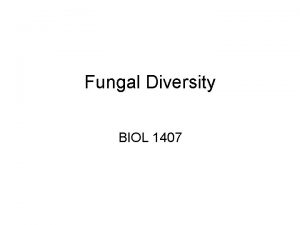Chapter 48 FUNGAL RHINOSINUSITIS Fungal Rhinosinusitis Acute invasive













































- Slides: 45

Chapter 48 FUNGAL RHINOSINUSITIS

Fungal Rhinosinusitis �Acute invasive Severe immunologic compromise �Chronic invasive Intact immune systems �Non-invasive Intact immune systems, neither over nor under responsive e. g. fungus balls Over-responsiveness to fungus e. g. eosinophilic fungal sinusitis - allegic fungal rhinosinusitis - non-allergic eosinophilic fungal rhinosinusitis Host immunologic response >> specific fungal species.

Acute Invasive Fungal Rhinosinusitis � Immunocompromised patients: transplantation, diabetic ketoacidosis, leukemia. � Rapid time course � Fever � Localization of symptoms to the nose or paranasal sinus area, such as orbital swelling, facial pain, or nasal congestion. � Nasal endoscopy: necrosis of the nasal mucosa, fungal sporulation vs. edema and changes indistinguishable from those seen in rhinosinusitis from nonfungal causes.

Histopathology: Invasive vs. Non-invasive �Histopathologic inspection shows the fungus invading tissue. � 45 -degree branching �Septated hyphae are present. Q: These feature are typical of: ? Aspergillus species

Invasive Fungal Species �Aspergillus A. fumigatus, A. flavus Can be acute invasive or chronic invasive Slowly progressive over weeks to many months Can even be angioinvasive, but they do not cause the obliterative invasion seen with mucormycosis. �Scedosporium apiospermum, Pseudallescheria boydii, Fusarium Invasive only in the setting of immunocompromise �Mucormycosis - all fungal species within the order Mucorales in the class of the Zygomycetes most virulent and common species is Rhizopus oryzae

Mucormycosis � Most acutely fatal fungal infection known to humans � Rapidly growing � Within 24 hours, cultures of Mucor species can grow to the top of the culture plate. � Mucor has a propensity for vascular invasion and obliteration leading to ischemia. � Growth is facilitated by acidotic conditions, and as the fungus grows, it facilitates its propagation by this vascular invasion, leading to more tissue ischemia.

Mucormycosis and Diabetes � Patients with poorly controlled diabetes, particularly with diabetic ketoacidosis, are uniquely at risk for invasive mucormycosis. � Normal human serum can inhibit the growth of Rhizopus (the most virulent of the mucor species), � BUT… the serum of patients with diabetic ketoacidosis actually may enhance fungal growth. � Dialysis patients and those receiving deferoxamine are also at higher risk. � Iron and altered transferrin binding physiology relate to the pathophysiology.

Physical Exam Q: Which finding is most common in acute invasive fungal sinusitis and precedes the others? �A) Ischemic darkened necrosis of the nasal cavity. �B) Anesthesia of the nasal mucosa or cheeks, independent of topical anesthetics. �C) Oral cavity shows invasion through the hard palate from the nose.

True or False? �CT scan of sinuses can be helpful in diagnosing acute invasive fungal sinusitis.

Role of Sinus CT in Acute Invasive Fungal Sinusitis � If the diagnosis is suspected, sinus CT should be obtained. � BUT… Changes seen on sinus CT scans or plain radiographs usually are indistinguishable from those in other causes of rhinosinusitis. (Except for advanced diseases which may show bony erosion or soft tissue invasion. ) Abnormal imaging findings are common in immunocompromised patients. 42% of patients with leukemia in one series, for example, had abnormal sinus radiographic findings.

Tissue Biopsy Diagnosis � Histopathologic findings of hyphae within tissue establish the diagnosis of invasive fungal rhinosinusitis. � Detection enhanced by the use of special stains for fungus. � Fungal culture specimens should be obtained, preferably before the initiation of systemic antifungal therapy. Q: Frozen section with calcofluor white stain shows hyphal elements invading into tissue. Fungal elements are broad, ribbon–like (10 to 15 um), irregular, and rarely septated. Diagnosis? Mucormycosis. Aspergillus species by contrast demonstrate more narrow hyphae with regular septations and 45 -degree branching.

Diagnosis? �Mucormycosis Periodic acid–Schiff stain Broad-hyphae Irregular, rare septations Angioinvasion: hyphae can be seen invading the vessel wall.

Diagnosis? �Fungus ball showing hyphae of Aspergillus Periodic acid–Schiff stain Narrow hyphae Regular septations 45 degree branching No tissue invasion

Diagnosis? �Candida Periodic acid–Schiff stain Polymorphic yeast Yeast cells, hyphae and pseudohyphae are produced.

Therapy �Which of the following is the most important element in the treatment of invasive fungal sinusitis? A) Surgical debridement B) Systemic antifungal therapy C) Reversal of the underlying cause of immunocompromise If the source of immunocompromise is profound and irreversible, the treatment will not be successful, and mutilating and painful adjuncts should be avoided.

Antifungal Agents �Which of the following antifungal agents is available as an oral formulation? �A) Amphotericin �B) Itraconazole �C) Voriconazole �D) Posaconazole

Antifungal Agents � Amphotericin Active against most pathogenic fungi Nephrotoxic, although reduced with lipid formulations � Itraconazole Variably active against Aspergillus species; not active against Zygomycetes. Monitor for liver toxicity � Voriconazole- Indicated for treatment of a broad range of fungal pathogens Not FDA approved but success has been reported with its use in chronic invasive fungal rhinosinusitis. � Posaconazole Broad range of invasive fungal infections, including Zygomycetes, Fusarium, and Aspergillus Available as oral suspension Also not FDA approved but efficacy in Mucor rhinosinusitis and Aspergillus rhinosinusitis has been reported. May well become the antifungal of choice for mucormycosis in the future

Paranasal fungus balls � Symptoms indistinguishable from those of chronic rhinosinusitis or may be asymptomatic and discovered incidentally. � Gross appearance at surgery is that of a darkened, often crumbly mass, occasionally with visible sporulation, 100% positive predictive value for histologic appearance of fungus ball. � CT finding of metallic or calcified densities within an opacified sinus cavity have a positive predictive power of around 60%.

Allergic Fungal Rhinosinusitis �Diagnosis is made histopathologically from the finding of an allergic mucin characterized by necrotic inflammatory cells, eosinophils, and Charcot-Leyden crystals (a byproduct of eosinophil degranulation). �Culture of the allergic mucin reveals a variety of fungal species. �Most rigorous criteria: elevation of immunoglobulin (Ig) E antibodies specific to the fungus found on culture �There must be no evidence of fungal invasion.

Therapy for Allergic Fungal Sinusitis � Endoscopic removal of the nasal polyps and inspissated allergic mucin. � Even if the surgical resection is incomplete, adjunctive systemic steroid therapy, usually beginning perioperatively at a prednisone dose of 40 to 60 mg for several days with tapering over 2 to 4 weeks, can result in remission. � Unfortunately, the predisposition to this allergic response can result in recurrence. Once large sinus cavity openings have been created, recurrences can often be managed in the office with endoscopic debridement, systemic and topical steroids, and, possibly, antifungal therapy.

Nonallergic Eosinophilic Fungal Rhinosinusitis �Ponikau et al. reported that in 93% of patients undergoing sinus surgery, both eosinophilic mucin and fungus were present in nasal lavage samples. �Less than half of their sample of almost 100 patients in whom eosinophilic mucin and fungus were present were allergic to fungus. �Cell-mediated responses provoked by fungus in a susceptible host were responsible for eosinophilic fungal rhinosinusitis (EFRS). � “nonallergic” eosinophilic fungal rhinosinusitis � Potential role for topical amphotericin B nasal irrigation BID

Chapter 49 BENIGN TUMORS OF THE SINONASAL TRACT

Benign Sinonasal Tumors �Unilateral nasal obstruction is the most common symptom in patients with either benign or malignant tumors of the sinonasal tract. �Osteoma and inverted papilloma are the first and second most frequent benign tumors of the sinonasal tract, respectively. �Inverted papilloma is the most common surgical indication and JNA is second most common indication because osteomas do not always require surgery.

Inverted Papilloma Q: Most frequently arises from which of the following sites: A) the lateral nasal wall in the fontanelle area. B) maxillary sinus C) frontal sinus D) sphenoid sinus The maxillary sinus is the second most commonly affected site, and frontal and sphenoid sinuses are rarely involved primarily. Often the lesion extensively involves more than one sinus, making it impossible to assess the exact site of origin.

Inverted Papilloma �Composed almost exclusively of hyperplastic ribbons of basement membrane (enclosed epithelium) that grow endophytically into the underlying stroma. �Viral etiology: HPV 6, 11, 16, 18. �Association with SCCA of between 3 -10%. Malignant transformation especially associated with HPV 16 and 18. �Unilateral nasal obstruction with watery rhinnorhea is the most commonly presenting symptom.

Inverted Papilloma �Endoscopy of the nose, showing a pale, polypoid lesion with a papillary appearance protruding from the middle meatus.

Imaging �MRI better than CT at differentiating tumor from inflammatory mucosal changes. �Cerebriform-columnar pattern: characterized by the alternation of regular parallel folds made of a highly cellular metaplastic epithelium and less cellular underlying stroma.

MRI vs. CT � T 2 -MRI demonstrates the cerebriform-columnar pattern of the lesion and permits visualization of the bony spur along the lateral maxillary sinus wall where the lesion originates. � The CT scan does not provide a good characterization of soft tissue density opacification but gives a superior view of the sclerotic bony spur.

Endoscopic Approaches for Inverted Papilloma � Type I resection For I. P. involving the middle meatus, ethmoid, superior meatus, sphenoid sinus. � Type II resection endoscopic medial maxillectomy, tumors originating within the nasoethmoidal complex and secondarily extending into the maxillary sinus For lesions not involving the anterior and lateral walls of the sinus itself. � Type III resection Entails removal of the medial portion of the anterior wall of the maxillary sinus to enable access to all the antrum walls. Recommended for inverted papillomas extensively involving the anterior compartment of the maxillary sinus. � Goal: Creation of a largely marsupialized cavity that will give wide access during followup for endoscopic inspection.

Sinonasal Papillomas �Fungiform papillomas exophytic fungiform papilloma found on the mucous membrane of the nasal septum have not been reported to have malignant potential. �Inverted papillomas Most common, arise from lateral nasal side wall Have been reported to develop into carcinoma in 5 -10% of cases. �Cylindrical papillomas Behave clinically like inverted papillomas Appear to have a higher frequency (14 -19%) of malignancy association.

Juvenile Nasopharyngeal Angiofibroma � Vascular endothelium-lined spaces embedded in a fibrous stroma � Typically affects young adolescents. � Pathogenesis may be related to vascular malformation vs. tumor. � Might develop from incomplete regression of a branchial artery

Juvenile Angiofibroma � Early lesions: Unilateral nasal obstruction Epistaxis � Advanced lesions: Swelling of the cheek, proptosis, or headache may be present, indicating an involvement of the infratemporal fossa, the orbit, or the cranial fossa. � Endoscopic finding of a smooth, hypervascularized lesion originating behind the middle turbinate, which is usually laterally displaced against the lateral wall. � Q: The pathognomic epicenter of origin for JNA is ? pterygopalatine fossae.

True or False? �The best way to diagnose JNA is by endoscopic tissue biopsy. False. The endoscopic finding of a polypoid hypervascular mass in a teenage boy strongly suggests a diagnosis of juvenile angiofibroma, which is usually confirmed by CT and MRI. Resorting to a biopsy, which is associated with a high risk of hemorrhage, is rarely if ever justified.

Treatment � Surgery is considered the mainstay in the management of juvenile angiofibroma. microendoscopic techniques midfacial degloving infratemporal fossa resection � Key steps to minimizing bleeding and achieving radical resection are: Dissection of the lesion in the subperiosteal plane with the help of bipolar coagulation Extensive drilling of the basisphenoid where the tumor is growing with digitations that are difficult to identify even under magnification. � Preoperative embolization of vascular blood supply can also be helpful in reducing intraoperative bleeding.

True or False? �Radiotherapy is a potentially effective alternative to surgery in the management of JNA. True. Radiotherapy at a low dose (30 -36 Gy) has been demonstrated to be effective in cases of advanced or recurrent lesions deemed not amenable to complete resection with acceptable morbidity.

Osteoma � Benign, slow-growing osteoblastic lesion. � Most common benign tumor of the sinonasal tract, found in 1 - 3% of patients who get imaging for sinus symptoms. � Q: The most frequently involved anatomic site is the: A) maxillary sinus B) ethmoid C) frontal D) sphenoid A: Frontal sinus (approximately 80% of cases), followed by the ethmoid, the maxillary sinus, and, more rarely, the sphenoid sinus.

Osteomas �Q: Osteomas can be observed in conjunction with ______ syndrome, a genetic disorder characterized by multiple polyps of the colon in association with osteomas of the skull and multiple soft tissue tumors. �Answer: Gardner’s Syndrome.

Treatment �Observation “wait and see” asymptomatic, slow-growing lesions that do not encroach upon critical structures such as the optic nerve, anterior skull base or the orbit (low risk for intracranial or orbital complication). risk for intracranial complication) �Frontoethmoidectomy Lynch-Howarth incision, midfacial degloving, lateral rhinotomy, Caldwell-Luc procedure, and osteoplastic frontal sinusotomy via a coronal incision) �Endoscopic Resection Technique consists of drilling the core of the lesion with a diamond bur, thus leaving a very thin shell of bone that can be easily fractured and dissected from the adjacent tissues.

Follow Up for Osteoma �Osteoma recurrences are very rare, routine periodic postoperative surveillance by CT is not justified. �CT exams performed 1 year after surgery and, on the basis of its results, make a decision about further radiologic follow-up. �The presence of a symptomatic stenotic frontal or maxillary sinusotomy would merit repeat CT examination.

Lobular Capillary Hemangioma � Rapidly growing lesion characterized by a proliferation of capillaries arranged in lobules and separated by a loose connective tissue stroma, often infiltrated by inflammatory cells � Typically appears at endoscopy as a red to purple mass, not larger than 1 cm, associated with epistaxis. � Endoscopic resection is treatment of choice.

Ossifying Fibroma and Fibrous Dysplasia � Ossifying fibroma of the sinonasal tract generally occurs in the third and fourth decades of life, preferentially in black women. � psammomatoid variant typically affects men at a younger age and displays a more aggressive local behavior. � Fibrous dysplasia is commonly diagnosed within the first two decades of life and may present in the following three forms: monostotic, polyostotic, and disseminated (a. k. a. Mc. Cune-Albright syndrome). � Neither ossifying fibroma nor fibrous dysplasia is associated with specific symptoms. � Present as space-occupying lesion in the nasal cavity and cause symptoms from sinonasal obstruction. � Advanced fibrous dysplasia may compress the optic nerve or the orbit (visual impairment) or contribute to aesthetic deformities.

Fibrous Dysplasia � Genetically based developmental anomaly of the bone-forming mesenchyme with a defect in osteoblastic differentiation and maturation. � Non-neoplastic condition. � Leads to replacement of normal bony tissue by fibrous tissue of variable cellularity and immature woven bone. � CT shows mineralized fibrous tissue replacing normal bone.

Ossifying Fibroma �Appears on CT as a well- defined, multiloculated lesion, bordered by a peripheral eggshell-like dense rim. �True benign neoplasm. �Well circumscribed, capsulated lesion with osteoblastic rimming.

Treatment �Ossifying Fibroma Requires radical resection High rate of relapses, Aggressive behavior of recurring tumors, with local destruction and potential invasion of adjacent vital structures. �Fibrous dysplasia- Surgery is intended to relieve symptoms such as visual impairment due to compression of the optic nerve or to correct aesthetic deformities, but not to remove the entire lesion. Bisphonates (inhibit osteoclastic activity) have been used with success in patients with extensive lesions associated with significant disfigurement and pain.

Schwannoma � Neurogenic tumor arising from the Schwann cells of the sheath of myelinated nerves. � Rare neoplasm that can be found in any part of the body; only 4% of the lesions involve the sinonasal tract. � May arise from the ophthalmic and maxillary divisions of the trigeminal nerves, sympathetic fibers of the carotid plexus or parasympathetic fibers of the pterygopalatine ganglion � Non-specific appearance on endoscopy as large polypoid mass entirely filling the left nasal cavity. � Treatment of choice is radical resection: endoscopic vs. traditional open techniques.
 Rhinosinusitis
Rhinosinusitis Exotic species meaning
Exotic species meaning Invasive ductal carcinoma with medullary features
Invasive ductal carcinoma with medullary features Characteristics of invasive species
Characteristics of invasive species Invasive species characteristics
Invasive species characteristics Invasive species characteristics
Invasive species characteristics Indiana invasive species council
Indiana invasive species council Invasive species laws
Invasive species laws Doc for invasive aspergillosis
Doc for invasive aspergillosis Non invasive halo brace
Non invasive halo brace Invasive species compendium
Invasive species compendium Sesleria autumnalis invasive
Sesleria autumnalis invasive Non invasive ventilation
Non invasive ventilation Non invasive ventilation
Non invasive ventilation General aseptic fields are managed critically
General aseptic fields are managed critically Invasive fungi
Invasive fungi Invasive species investigator worksheet
Invasive species investigator worksheet Invasive candidiasis
Invasive candidiasis Invasive beatmung über tracheostoma
Invasive beatmung über tracheostoma Invasive meningococcal disease
Invasive meningococcal disease Minimally invasive surgery
Minimally invasive surgery Least invasive intervention teach like a champion
Least invasive intervention teach like a champion Invasive species investigator worksheet
Invasive species investigator worksheet Ontario invasive fish
Ontario invasive fish Non invasive health monitor
Non invasive health monitor Invasive species growth curve
Invasive species growth curve Lerman non invasive halo
Lerman non invasive halo Noninvasive glucose meter
Noninvasive glucose meter Invasive plant atlas
Invasive plant atlas Are invasive species always bad
Are invasive species always bad Invasive species act ontario
Invasive species act ontario Generalized fungal life cycle
Generalized fungal life cycle Fungal cell walls are characteristic in having
Fungal cell walls are characteristic in having Fungal cell wall
Fungal cell wall In what situation should a nail service be performed
In what situation should a nail service be performed Histoplasmosis uveitis
Histoplasmosis uveitis Black boogers
Black boogers Nail diseases and disorders milady
Nail diseases and disorders milady Dikaryotic fungal life cycle
Dikaryotic fungal life cycle Csf findings in different meningitis
Csf findings in different meningitis Fungal reproduction
Fungal reproduction Chytridiomycota examples
Chytridiomycota examples Fungal classification
Fungal classification Haustorium in fungi
Haustorium in fungi Allergic fungal sinusitis treatment
Allergic fungal sinusitis treatment Phyla
Phyla
